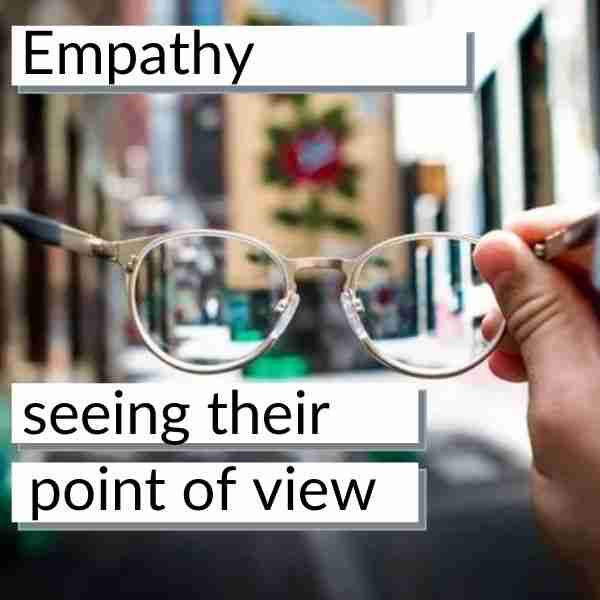
Are you interested in learning more about empathy so you can apply it to your life, work, and relationships for improved communication and the benefits that come with that?
Children Learn Empathy
Most people recognize that empathy is taught to children from an early age. It’s a highly useful skill to have for getting along with others. People who have higher levels of empathy tend to have more successful social outcomes. They are entrusted with increased responsibility and can be relied upon to preside over groups of people for their advanced communication skills.
Empathy in Personal Relationships
In personal relationships, empathy can bring us increased connection and fewer misunderstandings. Empathy is about being able to visualize another person’s situation and imagine the thoughts and feelings that person must likely be having as a response to the situation.
If you are dealing with a person who displays a lack of empathy, or if you yourself have been told that you need to work on your empathy skills, then you may wonder if this is something that can in fact be learned and mastered as an adult.
4-Step Empathy Training
Studies were recently conducted on whether or not empathy training was able to work on adult subjects. The findings did show that after receiving empathy training and putting the gained knowledge into practice, most of the people who underwent this experiment did gain the ability to empathize with others. However, it is worth noting that the participants in the study had a general willingness to increase empathy.
It is not known whether empathy training would have an effect on subjects who cognitively scored low on empathy, such as people who have antisocial and narcissistic personality disorders or autism.
This said, if you are facing a circumstance where empathy training might be of use to help improve an intimate relationship, hone leadership skills, correct antisocial behavior, or foster team connections, then it’s certainly worth taking a proactive approach and initiating the training.
To do this, you would need to initiate empathy training that involves the following:
Instruction
Basic, step-by-step instructions for how to show empathy in ordinary social situations should be offered. The instructions would ideally involve illustrating examples of people reacting in their thoughts and emotions to a variety of situations. Empathy trainees would be coached through identifying the feelings of other people as well as how to tailor an appropriate response.
Modeling
Individuals who take part in an empathy training program could be offered a series of suggested behaviors to model as they identify the need for empathy to be applied in everyday scenarios. They may benefit from watching videos or seeing live actors model appropriate empathy-driven responses to social cues.
Practice
The next phase of empathy training would have attendees taking their newly learned empathy skills and applying them in the real world. With each situation that they encounter that requires an empathy-filled response, they can become aware of how the other person is feeling or behaving, and tailor their own response to said person accordingly. Students of empathy training should also be encouraged to write down the situations that occurred where empathy-infused scenarios played out and how they responded.
Feedback
The final step in this 4-part empathy training course would demand that the instructor provide positive feedback for any indications of empathy in the interactions and responses of the subjects taking the course. Play-acting scenarios can be set up for students to participate in to help coach them through the development of increased empathy awareness and appropriate, empathy-filled responses in a social dynamic. When the student displays empathy, instructors would offer a positive reaction such as praise, nods of approval, smiles, and encouraging words.
People with refined empathy skills are good at predicting how others will react to various circumstances and at certain times. In doing so, they are able to approach situations at the right time, using the right words and asserting specific actions that the person or people with whom they’re dealing will find amenable. They are also able to communicate in a way that validates and acknowledges the thoughts, feelings, and experiences of other people which helps them enjoy a deeper connection with said persons. Engaging in empathy training may work to improve such skills, thereby increasing healthy communication among people who develop them.
Next: Real-Life Examples of Empathy | Previous: How Can We Practice Empathy?



Leave a Reply